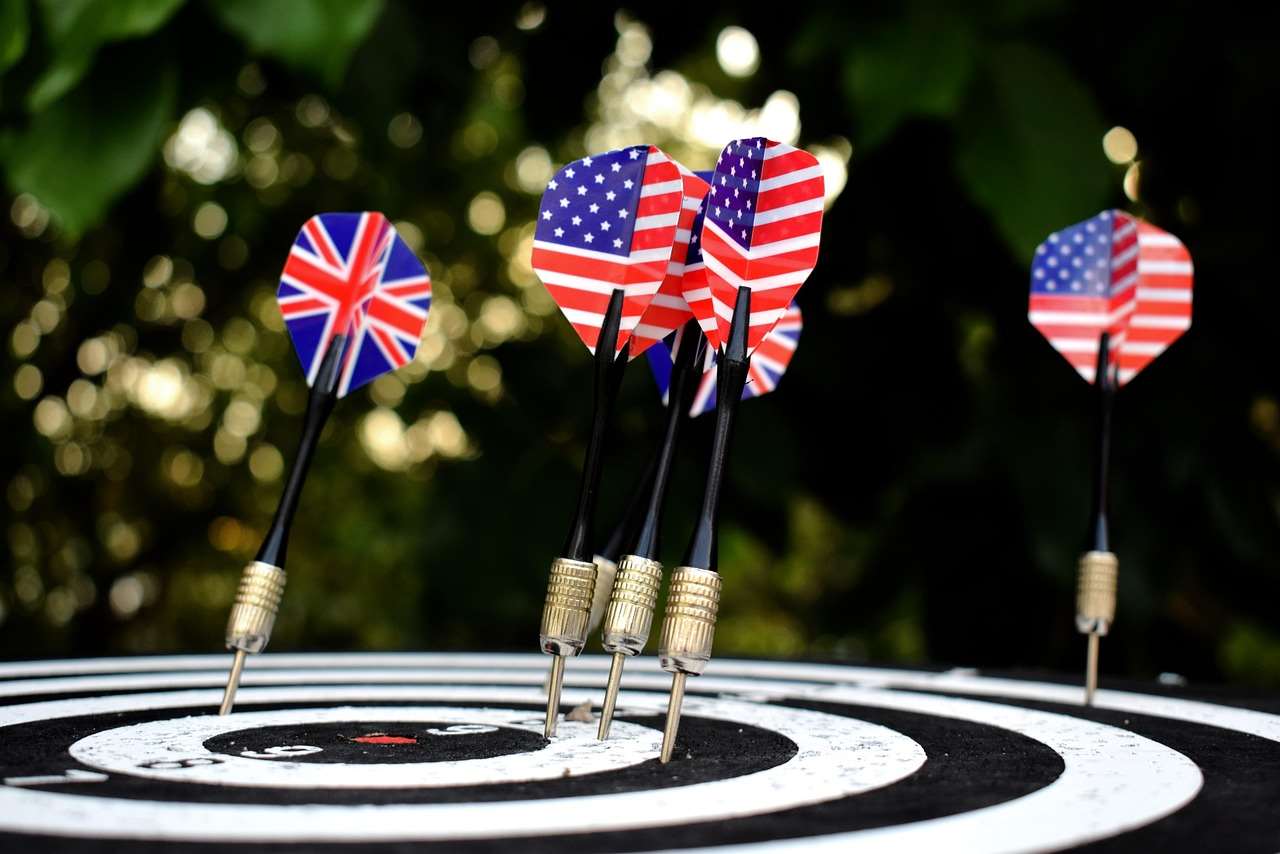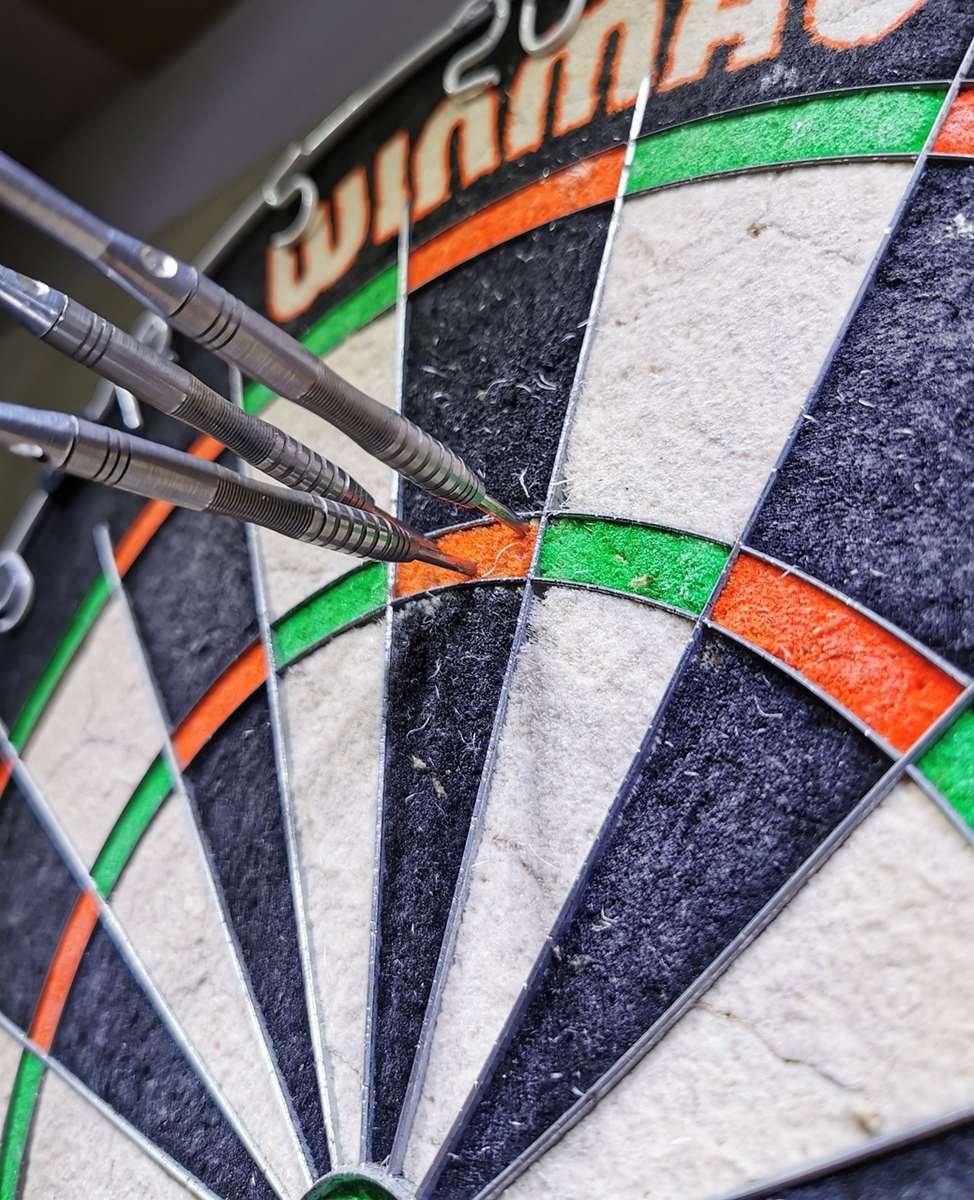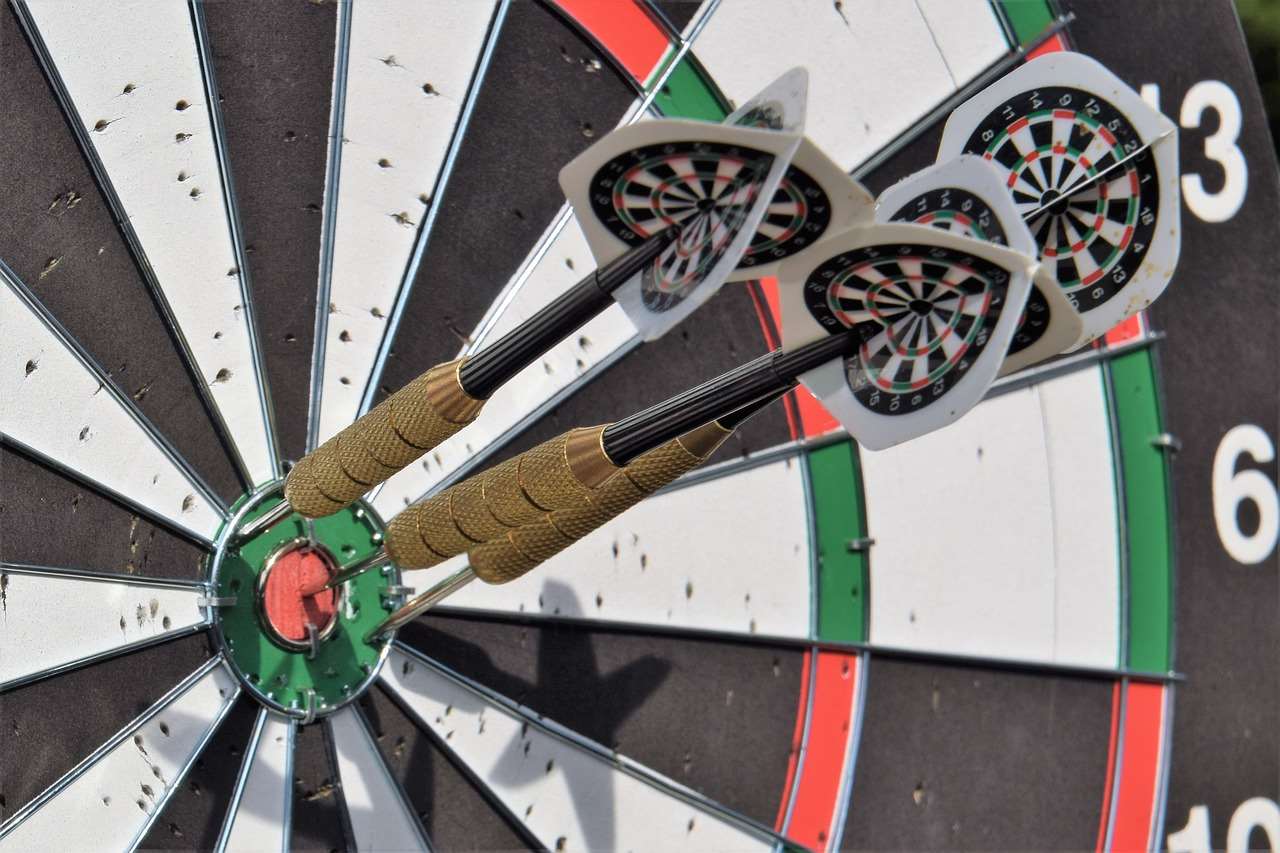Mastering **darts practice games specific doubles** is crucial for competitive success, and this article will provide you with targeted drills and strategies to significantly improve your accuracy on those crucial double outs. We’ll explore various practice routines, focusing on specific doubles and offering tips to help you develop consistency and confidence when aiming for the outer ring.
⚠️ Still Using Pen & Paper (or a Chalkboard)?! ⚠️
Step into the future! The Dart Counter App handles all the scoring, suggests checkouts, and tracks your stats automatically. It's easier than you think!
Try the Smart Dart Counter App FREE!Ready for an upgrade? Click above!
Why Focus on Darts Practice Games Specific Doubles?
Many dart players excel at hitting trebles but struggle when it comes to finishing a leg. The reason? They haven’t dedicated enough time to practicing their doubles. In a game like 501, getting down to a manageable double and then failing to convert is incredibly frustrating. **Dedicated practice** focusing on specific doubles eliminates this weakness and turns a potential loss into a victory. The mental fortitude gained from consistent double hitting is invaluable during match play.

Effective Darts Practice Games Specific Doubles: A Breakdown
Here are some of the most effective **darts practice games specific doubles** routines you can incorporate into your training regimen:
The “Around the Clock” Doubles Game
This is a classic for a reason. Start by aiming for double 1, then double 2, and so on, all the way up to double 20 and then the bullseye (which counts as a double 25). The goal is to hit each double three times before moving on to the next. This drill builds consistency and helps you identify which doubles you struggle with the most. Pay close attention to your stance, grip, and throw for each number. Adaptations can include only playing odd or even doubles depending on personal need. This exercise also reinforces accuracy and familiarizes you with aiming at all segments of the board.
The “Double In, Double Out” Game
This game simulates match conditions more closely. Start each leg by aiming for a specific double (e.g., double 20). Once you hit it, you can start scoring. The goal is to reach a score that leaves you with another double to finish (e.g., double 16). This drill practices both your double hitting and your checkout calculations under pressure. You can also randomly choose the starting and ending doubles to add variety. This also works for honing your Darts Variants Fun Games technique.
The “9-Dart Finish” Challenge (Doubles Focused)
While achieving a true 9-dart finish is exceptionally rare, this drill focuses on planning and executing optimal checkouts, emphasizing doubles. Start with a score of 170 (T20, T20, D25) or 167 (T20, T19, D25), and attempt to check out in as few darts as possible, prioritizing doubles as your final shot. This exercise sharpens your mental calculation skills and forces you to think strategically about your checkout routes. Alternate between various starting scores to improve adaptability.
The “Targeted Doubles” Routine
This routine involves choosing 3-5 specific doubles that you want to improve on. Dedicate a set amount of time (e.g., 15 minutes) to each double, throwing as many darts as possible at that target. Keep track of your hit rate for each double to monitor your progress. This allows you to address specific weaknesses and track your improvement over time. Vary the chosen doubles each session to ensure a well-rounded practice. Remember to track your progress over time to stay motivated.

Key Strategies for Improving Your Double Hitting
While practice is essential, employing the right strategies can significantly accelerate your improvement in **darts practice games specific doubles**. Here are some crucial considerations:
Stance and Alignment
Ensure your stance is consistent and allows you to comfortably aim at all parts of the dartboard. Your throwing shoulder should be aligned directly with the target double. Experiment with different stances to find what works best for you, but maintain consistency once you’ve found a comfortable position. Minor adjustments can make a big difference in your accuracy.
Grip and Release
Maintain a consistent grip on your dart. Avoid gripping the dart too tightly, as this can lead to tension and inaccuracy. A smooth, controlled release is crucial for hitting your target. Practice your release technique regularly to develop a consistent throwing motion. Different grips suit different players, experiment and find what suits you.
Aiming Points
Instead of focusing solely on the double itself, try using a specific point on the dartboard as your aiming reference. This could be the wire above the double, a specific segment of the board, or even a mental point in space. This can help you fine-tune your aim and improve your accuracy. Many professional players use these micro-adjustments.
Dealing with Pressure
Doubles are often missed due to pressure, especially in crucial moments. Simulate match pressure during your practice sessions. For example, challenge yourself to hit a certain number of doubles in a row or impose a penalty for missing. This will help you develop the mental toughness needed to perform under pressure.

Mental Game and Visualization in Darts
The mental aspect of darts is often overlooked, but it plays a significant role, especially when targeting doubles. Visualization techniques can be incredibly beneficial.
Visualization Techniques
Before each throw, close your eyes and visualize the dart hitting the desired double. See the dart flying through the air and landing precisely where you want it to go. This helps to build confidence and focus your mind on the task at hand. Mental rehearsal can significantly improve performance.
Positive Self-Talk
Replace negative thoughts with positive affirmations. Instead of thinking “I’m going to miss this,” tell yourself “I can hit this double.” Positive self-talk can boost your confidence and reduce anxiety. A positive mindset is crucial for success in darts.
Breathing Exercises
Take a few deep breaths before each throw to calm your nerves and focus your mind. Deep breathing can help to reduce anxiety and improve concentration. Control your breathing to control your emotions.
Advanced Darts Practice Games Specific Doubles Techniques
Once you’ve mastered the basics, you can move on to more advanced techniques to further refine your double hitting skills.
Varying Your Release Point
Experiment with slightly altering your release point to compensate for variations in your throw. This requires a high level of control and precision but can be a valuable tool for making subtle adjustments during a match. This is a highly advanced technique.
Using Spin
Adding spin to your dart can help to stabilize its flight and improve accuracy, especially over longer distances. However, mastering spin requires significant practice and a consistent throwing motion. This is an advanced technique that is not suitable for all players.
Analyzing Your Misses
Pay close attention to where your darts land when you miss a double. Are you consistently missing high, low, left, or right? Identifying patterns in your misses can help you to identify and correct flaws in your technique. Keep a record of your misses to track your progress.

Equipment and Setup for Effective Practice
Having the right equipment and a proper setup is essential for effective **darts practice games specific doubles**. The most important aspect is ensuring your dartboard is regulation height and distance away from the oche. A well-lit area is also crucial for accurate aiming. Furthermore, using quality darts that suit your grip and throwing style can greatly impact your consistency. Ensure your equipment is properly maintained to prevent wear and tear which can affect your game.
Troubleshooting Common Double-Hitting Problems
Even with diligent practice, you may encounter plateaus or periods where your double hitting falters. Here are common issues and how to address them:
- Inconsistent Release: Focus on your grip and release point. Film your throw and analyze it for inconsistencies.
- Target Panic: Practice deep breathing and visualization techniques to manage anxiety.
- Poor Stance: Review your stance and alignment. Ensure you are comfortable and balanced.
- Equipment Issues: Check your darts for damage or wear. Replace any damaged flights or shafts.
Tracking Your Progress and Staying Motivated
Consistent progress tracking is crucial for maintaining motivation and identifying areas for improvement in **darts practice games specific doubles**. Maintain a practice log, recording your scores, hit rates, and any specific challenges you face. Regularly reviewing your progress will provide you with tangible evidence of your improvement, keeping you motivated to continue practicing. Celebrate milestones, no matter how small, to reinforce positive habits. You may also want to explore forgotten pub dart games for extra variety!

The Importance of Regular Practice
Ultimately, consistent and dedicated practice is the key to mastering doubles in darts. Even short, focused practice sessions are more effective than infrequent, lengthy ones. Aim for at least 30 minutes of practice several times a week. Remember to vary your practice routines to keep things interesting and prevent boredom. Regular practice will build muscle memory and improve your consistency over time. Consider joining a local darts league to improve your skills and face your opponents. Discover the history of darts games uk to appreciate how important it is to play regular practice games!
Integrating Doubles Practice into Full Game Simulation
Don’t just practice doubles in isolation. Incorporate them into full game simulations to replicate the pressure of a real match. Play against yourself or a practice partner, focusing on your checkout strategy and execution. This will help you to develop the ability to hit doubles under pressure and improve your overall game. Try various scoring methods to learn and improve your game play style to dominate at the oche.
Conclusion: Master Your Doubles, Master the Game
Improving your double hitting is essential for becoming a proficient darts player. By incorporating these **darts practice games specific doubles** routines, strategies, and mental techniques into your training, you can significantly enhance your accuracy and confidence on the outer ring. Remember to be patient, persistent, and focused on continuous improvement. Put in the work, and you’ll soon be hitting those crucial doubles with greater consistency and control. Now, get to the oche and start practicing! Good luck!
Hi, I’m Dieter, and I created Dartcounter (Dartcounterapp.com). My motivation wasn’t being a darts expert – quite the opposite! When I first started playing, I loved the game but found keeping accurate scores and tracking stats difficult and distracting.
I figured I couldn’t be the only one struggling with this. So, I decided to build a solution: an easy-to-use application that everyone, no matter their experience level, could use to manage scoring effortlessly.
My goal for Dartcounter was simple: let the app handle the numbers – the scoring, the averages, the stats, even checkout suggestions – so players could focus purely on their throw and enjoying the game. It began as a way to solve my own beginner’s problem, and I’m thrilled it has grown into a helpful tool for the wider darts community.